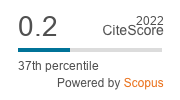Wilfrid Sellars and the two images of the world
DOI:
https://doi.org/10.17421/1121_2179_2001_10_02_MarsonetAbstract
In our century we are confronted not by one world-view, but by two extremely refined images, each of which means to be a complete picture. Wilfrid Sellars called these two perspectives, respectively, the “manifest” and the “scientific” image of man in the world. What are these two images, and are they really alternative? Many problems arise when some authors endorse the primacy of the scientific image. Sellars, for example, accepts the view that the scientific account of the world is the adequate image, so that “science is the measure of all things, of what is that it is, and of what is not that is not”. We argue that it is wrong to admit any kind of replacement of the manifest image by the scientific one, because they are not separated by a neat border. The task of common sense is to provide human beings with a practical way of interacting with the surrounding environment, and such interaction, in turn, is based on conceptualization. It follows that the conflict between common sense and the scientific view of the world – as envisaged by Sellars and others – is less dramatic than it is usually thought to be, because it does not take into account the essentially practical dimension of the manifest image and its bearing on the problem of survival.



